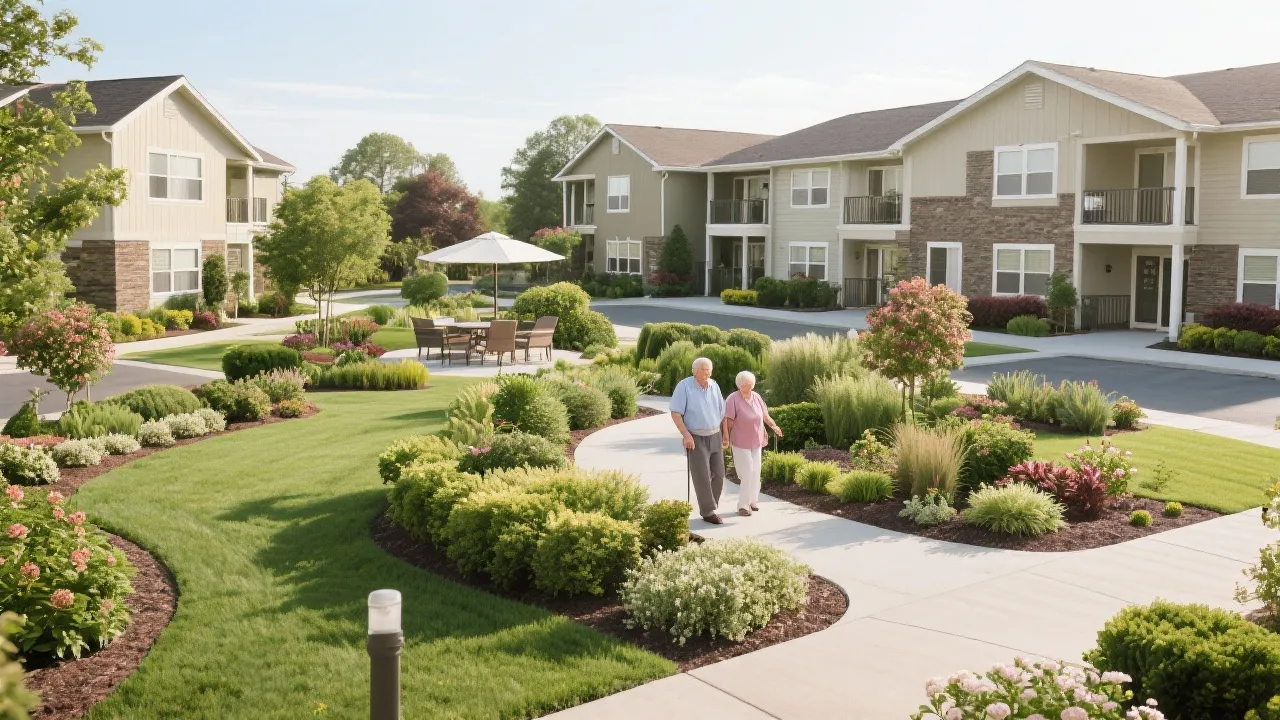Uncovering the top senior residences nearby offers insights into the options available for seniors seeking comfortable and supportive living environments. The term "Senior Residences Near Me" typically includes a variety of housing options such as independent living, assisted living, and memory care. Various factors, including pricing, amenities, and care services, influence the choice of such residences for seniors across locations.

Navigating Senior Living Options Nearby
As our population ages, the demand for senior living solutions continues to grow. Understanding the landscape of senior residences near you is crucial for making informed decisions. Senior residences often encompass various living arrangements, including independent living, assisted living, and specialized care facilities designed to meet the needs of older adults. These changes in demographics have resulted in an increasing number of facilities being developed to cater to a growing demand for senior services, leading to a diverse range of choices and options available today.
Types of Senior Living Residences
Senior residences vary widely in terms of services and care levels provided. The primary categories include:
- Independent Living: Perfect for seniors who desire an active lifestyle without the burdens of home maintenance. These communities often offer amenities such as dining plans, transportation, recreational activities, and social events that enhance the quality of life for their residents. Independent living is usually suited for seniors who are generally healthy and can manage day-to-day tasks on their own, though they may appreciate the convenience of community living.
- Assisted Living: Ideal for those who need some assistance with daily activities while retaining independence. Services often include personal care, medication management, regular health monitoring, and meals. Assisted living facilities provide a balance of independence and support, allowing residents to maintain a sense of autonomy while receiving help with tasks that may become challenging, such as bathing, dressing, and meal preparation.
- Memory Care: Specialized environments catering to the unique needs of individuals with Alzheimer’s or dementia, with tailored activities, specific therapies, and heightened security measures. Memory care units are designed to provide a safe environment that minimizes confusion and disorientation while offering specialized therapies aimed at improving quality of life for residents. Staff members in these facilities typically receive specialized training in handling the unique challenges associated with cognitive decline.
- Nursing Homes: Also known as skilled nursing facilities, they provide the highest level of medical care available outside of a hospital. They cater to individuals requiring 24-hour supervision and skilled nursing care, such as those recovering from surgery or managing chronic illnesses. Nursing homes focus on comprehensive health services, including physical therapy, rehabilitation, and personal care assistance, to help residents reclaim independence when possible.
- Continuing Care Retirement Communities (CCRCs): These communities offer a range of living options designed to adapt to the varying levels of care that individuals may need as they age. A CCRC may provide independent living, assisted living, and nursing home care within a single community, allowing residents to transition between levels of care without the need to relocate, thus maintaining familiarity and friendships.
Key Considerations When Choosing a Residence
Deciding on the right senior residence involves several crucial factors that can significantly shape quality of life and comfort:
- Location: Proximity to family, medical facilities, and familiar surroundings can significantly impact the quality of life for residents. Assessing how close a potential residence is to loved ones can be essential for maintaining relationships and receiving support. Additionally, being near hospitals and doctors’ offices provides peace of mind in terms of accessibility to healthcare.
- Costs: Understanding pricing structures is essential. Costs can vary greatly based on services, location, and housing type. It’s also important to explore what is included in the pricing—such as utilities, meals, transportation, and housekeeping—and be aware of any first-month fees or hidden costs that may arise, as these can significantly impact overall financial planning.
- Amenities and Services: Evaluate the on-site amenities such as wellness programs, social activities, and transport services. Communities that foster engagement and allow seniors to socialize generally improve mental and emotional health. It’s worth examining if the community offers services like fitness classes, arts and crafts, gardening, and movie nights, which can make life in a senior living community more fulfilling.
- Care Services: The level of medical and personal care provided is a core consideration, especially for those with specific health requirements. It is crucial to verify that the staff-to-resident ratio meets your expectations and needs, ensuring that residents receive adequate attention and care. Additionally, inquire about the types of healthcare professionals available on-site, such as nurses or social workers, to ensure comprehensive support.
- Community Culture: Every senior residence has its own ambiance—some are active and vibrant, while others are quieter. Visiting the communities can help you gauge the atmosphere and whether it aligns with the preferences of the soon-to-be resident. Engaging with current residents and staff can provide insight into the community's culture and values.
Finding Affordable Options in English-speaking Areas
Resources are available to aid in finding budget-friendly senior living options. Understanding the local and national resources can help budget-conscious families identify suitable residences without sacrificing quality:
| Organization |
Features |
| AARP |
Extensive resources on senior living options across the U.S., including guides on choosing suitable options, tips for navigating the senior living landscape, and educational materials to empower older adults and their families in their decision-making. |
| SeniorLiving.org |
A directory of senior living communities, pricing info, and amenities available nationwide. The site offers comparisons between facilities and can help families make informed decisions based on price range, services, and location. |
| NSCLC |
Advocacy and resources for legal rights, housing, and care for seniors. The organization is dedicated to empowering seniors by providing information on various resources, rights, and assistance options available for those who may face financial or medical challenges. |
Source: AARP, SeniorLiving.org, NSCLC
Rental Cost Analysis for English-speaking Countries
In addition to understanding the types of senior living residences available, analyzing rental costs across various regions can aid in the decision-making process:
| Country |
City Type |
Price Range |
| United States |
Large Cities |
$2,000 - $4,000/month |
| United States |
Smaller Cities |
$1,000 - $2,000/month |
| United Kingdom |
Large Cities |
£1,500 - £3,000/month |
| United Kingdom |
Smaller Cities |
£800 - £1,500/month |
| Australia |
Large Cities |
AUD 2,000 - AUD 3,500/month |
| Australia |
Smaller Cities |
AUD 1,200 - AUD 2,000/month |
FAQs: Answering Common Concerns
- What are the essential factors when choosing a senior residence? Consider the level of care needed, budget, location preferences, available amenities, and the community culture in order to select a residence that aligns with individual needs and lifestyle.
- How can I ensure quality care services? Examine reviews, speak with current residents, and visit multiple facilities to ascertain quality of care. Understanding how staff interact with residents and the overall feel of the community can significantly influence your decision.
- Are there financial assistance programs available? Some communities offer varied pricing models, and government or non-profit organizations may provide support based on eligibility. Researching ongoing grants, subsidies, and insurance options will help ascertain the best financial pathway for affording senior living expenses.
- What role does staff training play in care services? The training and certification of staff can greatly influence the quality of care provided. Facilities that invest in ongoing training and education for their employees can provide a higher standard of service, positively impacting residents' well-being.
- How do I handle the transition to a senior living community? Transitioning to a senior community can be emotionally challenging. It is important to involve the senior in discussions about the move and support them through the emotional aspects, possibly involving family or friends for encouragement and participation.
In conclusion, finding the perfect senior residence involves thorough research and understanding individual preferences and needs. Whether considering independent living or specialized care, engaging with available resources and understanding the nuances of your options will ensure a smoother transition and greater satisfaction in the chosen living arrangement.
As you navigate this process, remember to make a list of questions to ask during visits, and don't hesitate to follow up with concerns or clarifications. This will empower you or your loved ones to make the best choices tailored to their unique lifestyles and needs, fostering an environment where they can thrive in their golden years.
Disclaimer: The above information comes from online resources, and the data is as of October 2023. For more information, please refer to the official website.
References and further reading can be accessed through the following websites:









